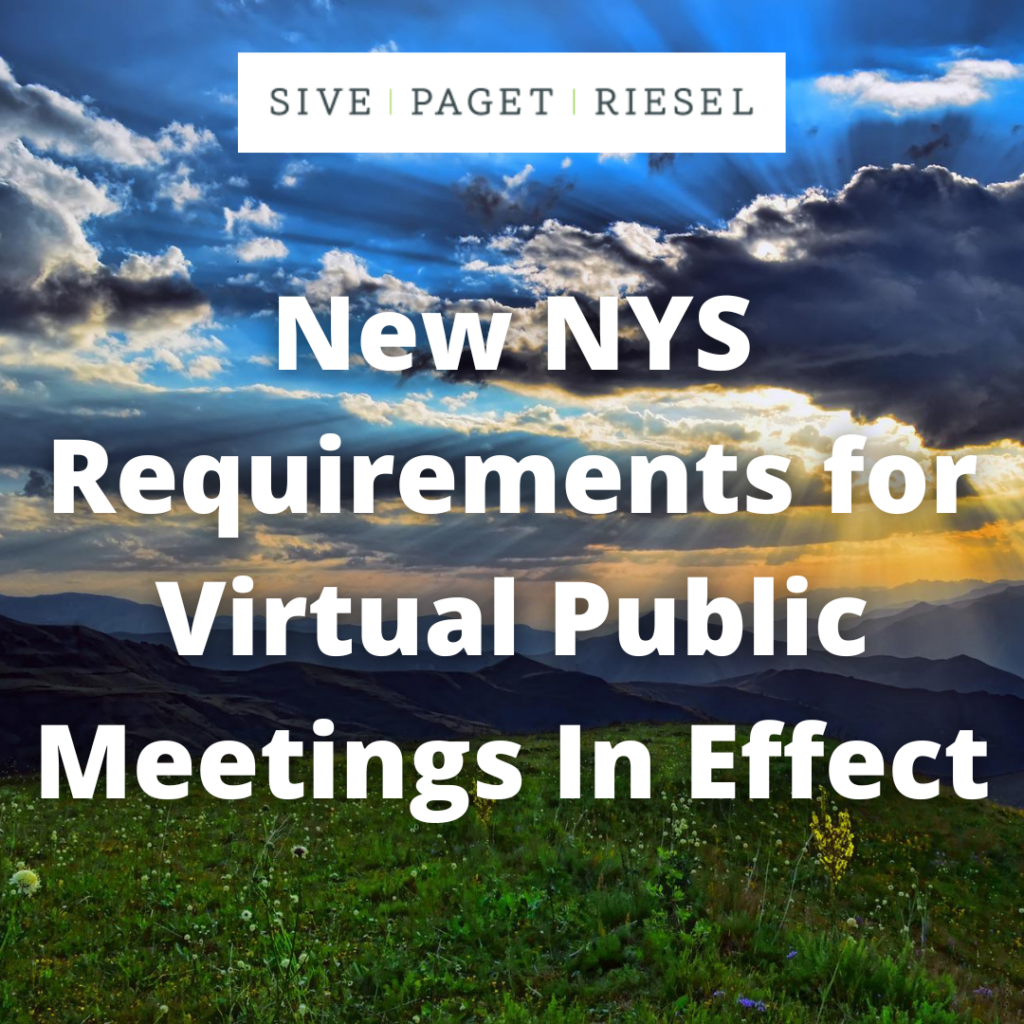Blog

New NYS Requirements for Virtual Public Meetings In Effect
On June 8, 2022, the virtual public meeting requirements adopted in the 2022 New York State budget came into full effect after the expiration of a 60-day transition period from the temporary provisions adopted during the Covid-19 pandemic. Codified in the New York Public Officers Law (POL) § 103-a, the new requirements allow local public bodies to use videoconferencing to conduct their meetings when certain conditions are met, as described below.
A “local public body” is fully defined in the POL, but in summary, the term encompasses public corporations such as a municipality and political subdivisions such as a school district, as well as any committee of such bodies. The term also encompasses any entity for which a quorum is required to conduct public business, that consists of at least two members, and that performs a governmental function encompassing less than the entire state.
The following requirements must be met for local public bodies to hold virtual public meetings:
- A minimum number of members are present to fulfill the public body’s quorum requirement in the same physical location or locations where the public can attend;
- The municipal governing board has adopted a local law, a public body has adopted a resolution, or the senate and assembly have adopted a joint resolution, following a public hearing, authorizing the use of videoconferencing;
- The public body has established written procedures governing member and public attendance consistent with POL 103-a, and such written procedures are conspicuously posted on the public website of the public body;
- Members of the public body are physically present at the meeting unless there are extraordinary circumstances such as illness, except such requirement does not apply during a state or locally declared state of emergency where the public body determines that the circumstances necessitating the emergency declaration would affect the ability to hold an in-person meeting;
- Except in the case of executive sessions, the public body ensures that members of the public body can be heard, seen, and identified while the meeting is being conducted;
- The minutes of the meetings involving videoconferencing include which, if any, members participated remotely and are available to the public pursuant to POL 106;
- If videoconferencing is used to conduct a meeting, the public notice for the meeting must inform the public that videoconferencing will be used, where the public can view and/or participate in such meeting, where required documents and records will be posted or available, and identify the physical location for the meeting where the public can attend;
- The public body provides that each meeting conducted using videoconferencing is recorded, with such recordings posted or linked on the public website of the public body within five business days following the meeting, the recordings remain so available for a minimum of five years thereafter, and the recordings are transcribed upon request;
- If videoconferencing is used to conduct a meeting, the public body must provide the opportunity for members of the public to view such meeting via video, to participate in proceedings via videoconference in real time where public comment or participation is authorized, and ensure that videoconferencing authorizes the same public participation or testimony as in-person participation or testimony; and
- A local public body electing to utilize videoconferencing to conduct its meetings must maintain an official website.
Local governments should familiarize themselves with these requirements, including the provisions mandating adoption of a local law authorizing the use of videoconferencing and public posting of written procedures governing attendance. If implemented lawfully, videoconferencing can be a helpful tool for facilitating public engagement with local decision-making.